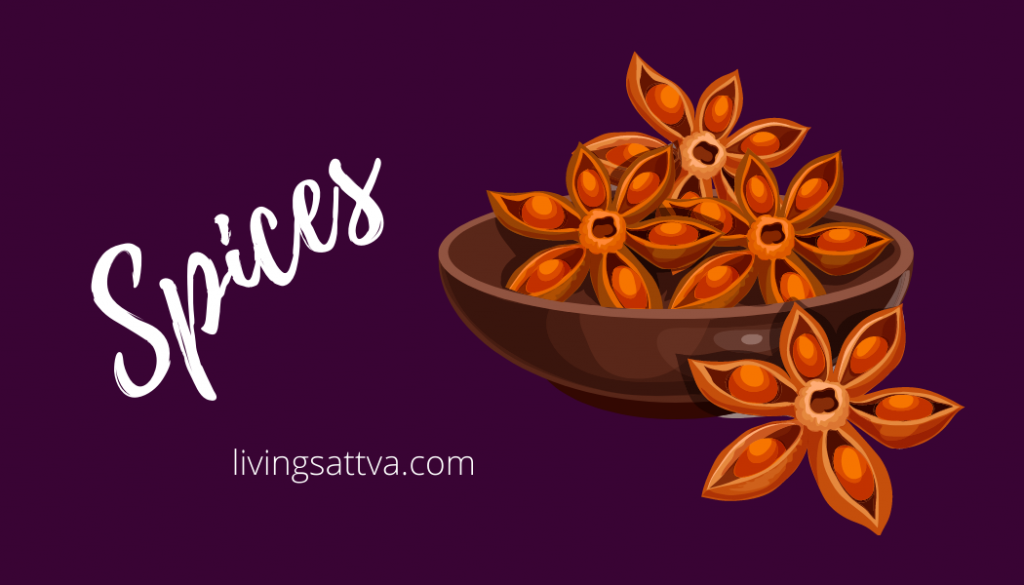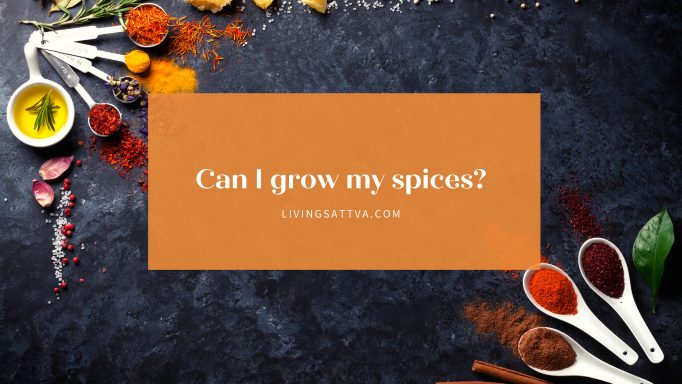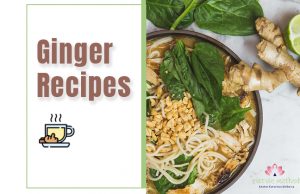Looking at my spice store a visitor asked me this question, Can I grow my spices?
Most spices used in sattvic cooking grow in the tropical climate. The spices have a long history of trade and commerce with well-established trade routes by the Middle Ages. Ginger, black peppercorn, cinnamon bark, cloves, nutmeg, cumin, nutmeg- the original spices traded during the Middle Ages that were used for thousands of years in the east, are still in use all over the world today. Gradually, new spices got added to the mix.
This blog post briefly shows the climate required for spices to grow and feasibility of growing spices at home. Let us take the example of a few tropical spices and study what it takes to grow them.
The ginger root grows in warm, humid, tropical climates. This flowering plant from the family Zingiberaceae is a close relative of turmeric, cardamom, and galanga. Ginger grows best at an elevation between 300 and 900 m (1,000 and 3,000 ft), and in well-drained soils at least 30 cm deep. Ginger is grown from ginger root slices called ‘seed rhizome.’ In India, many planters treat the seed rhizomes with hot water or cow dung emulsion to prevent any harmful, pathogenic pests.
Ginger is a thirsty plant. It needs plenty of water while growing up, especially to form the rhizome. Since ginger needs water to grow, it is planted during the monsoon season (between March and June). Once the seed rhizome is in the soil, it needs to be covered by mulch to preserve the seed rhizome from drying out. As the shoots come up, the earth is stirred and mulched again to support the rhizome growth. Planters continue to water the ginger plants after monsoon until winter sets in (until November). If your environment can keep this temperature requirement, has the soil type, and supports ginger’s needs, you can grow ginger in your homestead or home.
Some spices like cloves and nutmeg take many long years to grow. Clove trees cannot grow in areas with cool climates. They need hot, humid, and relatively wet areas to grow, all of which add up to indicate a tropical climate. The clove spice we use comes from unopened flower buds, which are rich in oil. The flower buds are delicately harvested and dried in the sun. A clove tree can take up to twelve years to produce flowers.

Spices are usually produced from perennial plants. These plants are slow-growing, requiring specific soil and climates to flourish. It might often be hard to replicate these climate conditions in your location unless you have a greenhouse that can support these growing conditions. Unfortunately, when we try to grow many of the spices in the greenhouse, it is not always successful as the plants may not flower or fruit. That means even if a plant grows, it could remain in a vegetative state for a long time.
Many spices can grow in a milder climate as well. Some perennial plants such as mint, overwinter well. Other annual plants also give us spices we might relish. In the seasonal North American environment, we can grow herbs like dill. Dill seeds make an excellent spice. Anise, or dill, is a close relative of parsley, was valued for its flavor and medicinal properties. It has a long history of use in Greece, Egypt, Iran, and the Middle East. Anise seeds were also valuable enough to be the currency to pay taxes in ancient Palestine. Anise is used in many cuisines around the world.
Pimento, also known as allspice, grows in warmer climates of Mexico and Central America. The British coined the name allspice early in the 17th century to mix pimento, cinnamon, nutmeg, and clove. Allspice is popular in many cuisines around the world, especially in the Middle East. Several recipes from the Middle East exclusively use only allspice fruits as the flavoring agent. The berries that look like peppercorns are used in pickling and for curry powders. Pimento is a sattvic spice and can be used in sattvic spice blends. Read this blog post to know more about sattvic spices.
Living Sattva has released three sattvic spice blends that are perfect for you. Order them in our store, and we will mail them to you. Buy our recipe books here? or reach out to us for a consultation about healing foods.
Sattva is the quality of purity and consciousness in all of us. Living Sattva is dedicated to bringing you products that shower healing well-being and balances your highest energy potential. One of the ways to enhance your energy from ups and downs is to consume sattvic food. This blog post tells you more about sattvic food and its effect on energy. You can choose sattvic food. It is a conscious choice; read more about it here. This resource helps you to start your sattvic pantry.
Find recipe videos on our Youtube channel and our website. Sign up for our newsletter for exclusive recipes, videos, and more freebies. Before signing off, we welcome you to try out the flavorful recipe eggplant saung today! Let us know how you relished this recipe.




